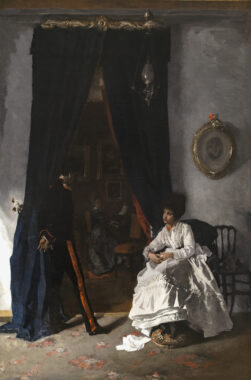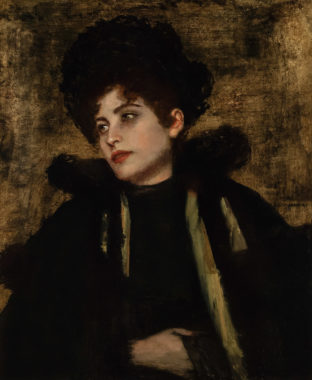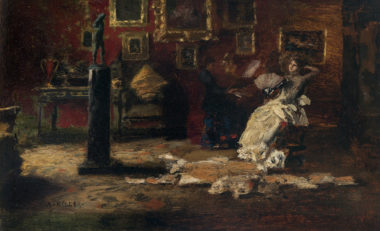Keller, Albert von
Sold Artworks
Biography
Albert von Keller
1844 Gais (Switzerland) – 1920 Munich
Albert Keller was the outstanding society painter active in Germany at the turn of the twentieth century. His cosmopolitan spirit, charm and social finesse secured him a prominent role in the Munich Secession, of which he was a founding member in 1892. He remained its deputy president until his death in 1920. He was elevated into the nobility in 1897. The aristocratic and haut bourgeois notions that governed the years between the founding of the German Empire and the First World War are mirrored not just in Keller’s own person but also in his art.
Keller’s artistic development was formed largely through independent study and private tuition rather than his period of training at the Munich Academy of Art. In the 1870s and 1880s he specialized in genre-style interiors influenced by French Salon painting. This brought him critical recognition and commercial success. He was respected both for his narrative skills and for the technical bravura of his brushwork. Areas of refined delicacy alternate with passages of very fluid, free execution, whereby the palette is reduced and predominantly tone-in-tone.
In 1878, Keller’s marriage to Irene von Eichthal, a banker’s daughter, brought him a large measure of financial security. The couple’s spacious apartment next to the Grandhotel Vier Jahreszeiten on Munich’s fashionable Maximilianstrasse was opulently furnished with Old Master paintings, bronze casts after the antique, European objets d’art and Far Eastern works of art. While offering something of a private haven the apartment also played host to Munich high society. This dual aspect is a recurrent theme in Keller’s work.
Keller was in contact with a large number of fellow artists and cultivated good relations with leading members of the German intelligentsia. As a member of the Psychologische Gesellschaft along with Carl du Prel, a philosopher, and Albert von Schrenck-Notzing, a psychiatrist and parapsychologist, he explored spiritualist and parapsychological phenomena, attending seances and necromantic rituals. Themes of this kind were to occupy a central role in Keller’s painting from the 1880s through to the turn of the century.
A major break in his work occurred in the early 1900s when he suffered personal tragedy. Female portraits in a more conventional genre began to predominate in his work and he turned to decorative depictions of the female nude executed in a fluid style reminiscent of Impressionism.
Keller advanced to be one of the most successful artists of his time even though he continually eschewed routinization and rejected the dictates of fashion. However firmly entrenched in contemporary trends his fifty-year career may have been, his oeuvre is none the less marked by a high level of artistic independence and remains an expression of his unique personality. This is what sets Keller apart from so many of his peers.
PDF Download


